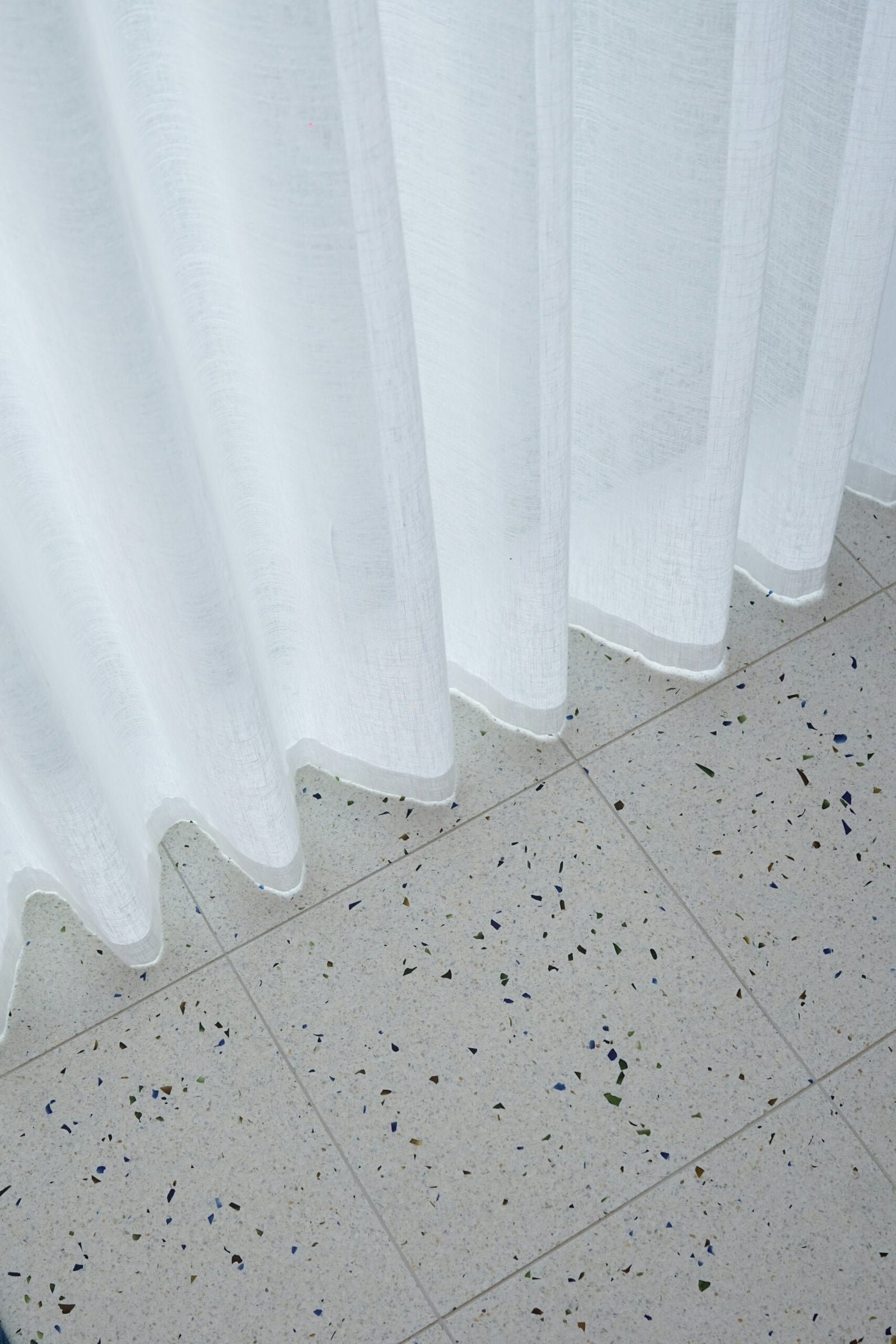Discover the timeless elegance and versatility of terrazzo, a composite material with roots in 15th-century Venice, now making a significant comeback in modern design. Learn about its history, types, benefits, and creative applications from flooring to countertops and furniture. Explore how terrazzo’s durability, low maintenance, and eco-friendly attributes align with contemporary design trends and sustainable building practices. Find out how to care for and maintain terrazzo surfaces to ensure their longevity and aesthetic appeal.
Introduction to Terrazzo
Terrazzo, a composite material that has been around since the 15th century, initially gained popularity in Venice, Italy. Originally, it was a cost-effective way to reuse marble scraps, creating a unique and durable flooring option. This ancient technique has made a significant comeback in recent years, becoming a favorite among designers, architects, and homeowners who appreciate its blend of history, versatility, and visual appeal.

The resurgence of terrazzo can be attributed to its unique aesthetic qualities and its adaptability to various design styles. Whether used in modern, minimalist spaces or more traditional settings, terrazzo’s diverse color palette and the ability to incorporate a wide range of aggregates make it a highly customizable material. This flexibility allows for creativity in design, enabling it to fit seamlessly into different environments, from residential homes to commercial buildings.
Read this article and do not forget to check the YouTube channel “Chad Love” for other amazing videos:
https://www.youtube.com/@chadlove7780
Terrazzo Installation (video)
One of the critical factors contributing to the renewed interest in terrazzo is its remarkable durability. Known for its longevity, terrazzo can withstand heavy foot traffic and maintain its beauty over time, making it an excellent choice for high-traffic areas such as hallways, kitchens, and public spaces. Its low maintenance requirements further add to its appeal, as it only needs regular cleaning and occasional resealing to keep it looking pristine.
Moreover, terrazzo’s eco-friendly attributes are increasingly important in today’s design world, where sustainability is a significant consideration. The ability to use recycled materials, combined with its long lifecycle, makes terrazzo an environmentally responsible choice. This aligns with the growing trend towards sustainable building practices and materials.
In summary, the timeless elegance, durability, and environmental benefits of terrazzo have contributed to its resurgence in popularity. Its versatility allows it to be used in various applications, capturing the imagination of those looking to incorporate a material that combines historical significance with modern design sensibilities.
The History and Evolution of Terrazzo
Terrazzo, the composite material that has become synonymous with modern design, boasts a rich history that traces back to 15th-century Italy. Originating in Venice, terrazzo was initially crafted by ingenious Venetian workers who sought to repurpose marble remnants from upscale construction projects. These artisans embedded the marble chips into a base of clay or lime, creating a durable and visually appealing surface that adorned the floors of their homes. The process involved grinding and polishing the material to reveal the intricate patterns of the embedded stones, a technique that remains central to terrazzo creation today.
As time progressed, the methods for creating terrazzo evolved. By the 18th century, the traditional clay base was replaced by cement, a transition that significantly enhanced the material’s durability and allowed for larger-scale applications. This period also saw the introduction of metal divider strips, which offered greater design flexibility and enabled the creation of more intricate and colorful patterns. The popularity of terrazzo spread beyond Italy, gaining traction throughout Europe and eventually making its way to the United States in the early 20th century.
One of the key historical milestones for terrazzo was its adoption in the Art Deco movement of the 1920s and 1930s. Its versatility, combined with its aesthetic appeal, made it a favored choice for public buildings, theaters, and commercial spaces. The mid-20th century saw another resurgence in terrazzo’s popularity, particularly in the post-World War II era, when it was widely used in schools, airports, and other institutional buildings across the United States.
Throughout its evolution, terrazzo has not only retained its functional and aesthetic qualities but has also adapted to contemporary architectural styles and cultural preferences. Today, it stands as a testament to the ingenuity of its creators and the adaptability of design, continuing to be a material that architects and designers worldwide celebrate and utilize in innovative ways.
Types of Terrazzo: Materials and Methods
Terrazzo, an enduring and versatile material, comes in various types, primarily categorized by the binding agents and installation methods. The two main types are traditional cement-based terrazzo and modern epoxy-based terrazzo. Each type offers unique benefits and considerations, making it essential to understand their differences when selecting the appropriate terrazzo for a project.
Traditional cement-based terrazzo has been used for centuries and is renowned for its durability and classic appearance. This type relies on a cement matrix to bind aggregates such as marble, quartz, granite, and glass chips. The installation process involves pouring a mixture of cement and aggregates over a prepared surface, allowing it to cure, and then grinding and polishing it to achieve a smooth finish. Cement-based terrazzo is known for its strength and longevity, making it an ideal choice for high-traffic areas. However, it can be prone to cracking and may require regular maintenance to preserve its appearance.
On the other hand, modern epoxy-based terrazzo has gained popularity due to its versatility and ease of installation. This type uses an epoxy resin as the binding agent, which provides a more flexible and crack-resistant surface compared to cement. Epoxy-based terrazzo can incorporate a wider range of aggregates, including recycled materials, which enhances its aesthetic appeal and sustainability. The installation process is quicker, as epoxy cures faster than cement, and the resulting surface is non-porous, resistant to stains, and easier to maintain. However, epoxy-based terrazzo may not be as suitable for outdoor use because it can degrade under prolonged exposure to UV light.
Both cement-based and epoxy-based terrazzo offer distinct advantages and disadvantages, and the choice between them largely depends on the specific requirements of the project. Cement-based terrazzo is ideal for traditional, high-traffic applications, while epoxy-based terrazzo offers modern design flexibility and ease of maintenance. By understanding the materials and methods involved, one can make an informed decision that ensures the longevity and beauty of the terrazzo installation.
Creative Applications of Terrazzo
Terrazzo, a composite material known for its durability and aesthetic versatility, has seen a resurgence in contemporary design and architecture. Its applications extend far beyond traditional flooring, offering a plethora of creative possibilities that cater to modern tastes and innovative design approaches.
One of the most common uses of terrazzo is in flooring. Its seamless, polished finish provides a sleek and timeless look that complements various interior styles. The ability to customize colors and patterns allows designers to create unique, eye-catching floors that stand out as a central feature in any space. Additionally, terrazzo’s durability makes it an ideal choice for high-traffic areas, both residential and commercial.
Countertops are another popular application of terrazzo. The material’s resistance to stains and scratches makes it a practical option for kitchens and bathrooms. Designers can incorporate terrazzo countertops to add a touch of elegance and sophistication to these functional spaces. The endless color combinations and aggregate choices enable the creation of bespoke pieces that reflect personal style and complement surrounding elements.
In addition to flooring and countertops, terrazzo is increasingly being used in wall treatments. Terrazzo walls can serve as striking feature elements in living rooms, lobbies, and commercial spaces. The material’s unique texture and visual appeal create a dynamic backdrop that enhances the overall ambiance of the environment.
Furniture designers are also experimenting with terrazzo, incorporating it into tables, benches, and other pieces. The material’s versatility allows for the crafting of furniture items that are not only durable but also artistically intriguing. These pieces often become conversation starters, adding character and charm to any interior setting.
Home décor items are yet another avenue where terrazzo is making its mark. From decorative trays and planters to coasters and clocks, terrazzo-infused décor items bring a touch of contemporary style to everyday objects. These small accents can tie together a room’s design, offering a cohesive and polished look.
Innovative uses of terrazzo are continually emerging, pushing the boundaries of this versatile material. Designers are exploring its potential in outdoor spaces, creating terrazzo garden paths, and even integrating it into public art installations. This evolution demonstrates terrazzo’s enduring appeal and its capacity to adapt to various design challenges, making it a material that continues to captivate the imagination of designers and architects alike.
Benefits of Using Terrazzo
Terrazzo has garnered significant attention in recent years, and for good reason. One of the primary benefits of terrazzo lies in its remarkable durability. This composite material, made from chips of marble, quartz, granite, glass, or other suitable materials, is bound with cement or epoxy resin, resulting in a surface that can withstand heavy foot traffic and resist wear and tear. This inherent strength makes terrazzo an excellent choice for both residential and commercial applications.
Another advantage of terrazzo is its low maintenance requirements. Unlike other flooring options that may need regular upkeep, terrazzo is relatively easy to care for. Its sleek and smooth surface can be effortlessly cleaned with a mop and mild detergent, making it an attractive option for busy households and high-traffic public spaces. Moreover, terrazzo’s resistance to stains and moisture further enhances its appeal, as it can maintain its pristine appearance for years with minimal effort.
In addition to its durability and low maintenance, terrazzo is also an eco-friendly choice. The production of terrazzo often involves the use of recycled materials, such as discarded glass or stone chips, which helps reduce waste and lower the environmental impact. Furthermore, terrazzo’s long lifespan means that it does not need to be replaced frequently, contributing to sustainability by reducing the need for new materials and minimizing waste.
Terrazzo’s resistance to wear, stains, and moisture makes it an ideal material for various applications. It can be used in a wide range of settings, from schools and hospitals to airports and shopping malls, where durability and easy maintenance are paramount. Additionally, the aesthetic versatility of terrazzo allows for creative and customizable designs, adding a unique touch to any space.
In conclusion, the benefits of using terrazzo are manifold. Its durability, low maintenance, eco-friendliness, and resistance to wear, stains, and moisture make it a highly desirable material for both residential and commercial spaces. Terrazzo not only provides a practical solution but also contributes to sustainable building practices, making it a material worth considering for any project.
Design Trends and Inspirations
In recent years, terrazzo has emerged as a versatile and stylish material in interior design, capturing the attention of designers and architects alike. A key trend in using terrazzo is its integration into various color palettes, allowing it to complement both vibrant and neutral schemes. Popular color combinations include soft pastels mixed with bold, contrasting hues, as well as minimalist black, white, and gray tones. These palettes provide a modern yet timeless appeal, making terrazzo a highly sought-after choice.
Patterns play a crucial role in terrazzo’s appeal, with designers experimenting with a range of styles to create unique and eye-catching surfaces. Large, chunky aggregates offer a bold and contemporary look, while smaller, more intricate patterns provide a subtle and refined aesthetic. The versatility of terrazzo allows it to be used in various applications, from flooring and countertops to wall cladding and furniture, making it a favorite among interior designers.
Leading designers and architects have showcased terrazzo in notable projects, further cementing its status as a trending material. For instance, the terrazzo-clad interiors of the Ace Hotel in New York City feature a mix of muted and vibrant colors, creating an eclectic yet cohesive look. Similarly, the Google headquarters in London utilizes terrazzo flooring to achieve a seamless and sophisticated finish, blending functionality with aesthetic appeal. These examples highlight the material’s adaptability and its potential to elevate any interior space.
In addition to its aesthetic qualities, terrazzo is also favored for its durability and sustainability. Made from a mix of natural stone chips and recycled materials, terrazzo is an eco-friendly choice that aligns with the growing demand for sustainable design solutions. Its long-lasting nature ensures that it remains a staple in interior design trends for years to come.
Overall, the resurgence of terrazzo in contemporary design is a testament to its enduring appeal and versatility. By incorporating this material into various design elements, architects and designers can create spaces that are both visually stunning and highly functional.
How to Care for and Maintain Terrazzo Surfaces
Caring for and maintaining terrazzo surfaces is pivotal to preserving their aesthetic appeal and functional integrity. Proper upkeep not only enhances the longevity of the material but also ensures it retains its unique charm over time. Below are some key guidelines for cleaning, sealing, and repairing terrazzo surfaces.
Firstly, regular cleaning is essential. Dust and dirt can act as abrasives that may scratch the surface. Use a soft broom or a vacuum with a soft brush attachment to remove loose debris. For wet cleaning, employ a pH-neutral cleaner specifically designed for terrazzo. Avoid acidic or alkaline cleaners, as they can damage the surface. Mop the floor with the cleaner and water, ensuring you rinse thoroughly to avoid any residue buildup.
Sealing terrazzo is another critical step in its maintenance. A high-quality, penetrating sealer should be applied to protect the surface from stains and moisture. Typically, sealing should be done every one to two years, depending on the level of foot traffic the surface endures. Before applying a new coat of sealer, ensure the surface is clean and dry for optimal adhesion.
Despite best efforts, terrazzo surfaces may occasionally suffer from minor damages like chips or cracks. These can often be repaired with a terrazzo patching compound. For small chips, fill them with a matching epoxy or resin and smooth it out. For more significant repairs, it might be necessary to consult a professional to ensure the terrazzo is restored to its original condition.
Common issues such as discoloration or dullness can also be addressed easily. Regular polishing with a diamond polishing pad can restore the terrazzo’s shine. In cases of severe discoloration, professional grinding and re-polishing might be required to rejuvenate the surface.
By adhering to these maintenance practices, you can keep your terrazzo surfaces looking pristine and ensure they stand the test of time.
Future of Terrazzo in Design
As we look ahead, it is evident that terrazzo will continue to play a pivotal role in design and architecture. The material’s unique blend of aesthetics and durability has already cemented its place in contemporary design, but emerging trends and technological advancements suggest that its potential is far from exhausted.
One of the most promising trends is the increasing interest in sustainable and eco-friendly materials. Terrazzo, known for its ability to incorporate recycled glass, marble chips, and other aggregates, aligns perfectly with this movement. Designers and architects are likely to explore even more innovative ways to utilize waste materials within terrazzo, making it an even more attractive option for green building projects.
Technological advancements are also set to revolutionize the terrazzo industry. Modern manufacturing techniques, such as 3D printing, could allow for more intricate and customizable patterns, pushing the boundaries of what is possible with terrazzo. Additionally, advancements in sealants and finishing products will likely enhance terrazzo’s already impressive durability and ease of maintenance, making it suitable for an even wider range of applications.
Moreover, the versatility of terrazzo is poised to expand its use beyond traditional flooring and countertops. We are already witnessing its application in furniture design, wall cladding, and even outdoor spaces. This adaptability ensures that terrazzo will remain relevant in both residential and commercial projects, catering to evolving design preferences.
In terms of aesthetics, we can anticipate a broader spectrum of color options and aggregate combinations. The ability to experiment with different hues and materials will allow designers to create truly unique and personalized spaces. Terrazzo’s blend of classic appeal and modern versatility ensures that it will continue to be a material of choice for innovative and forward-thinking design professionals.
Other related posts from our website:
https://howtobuildahouseblog.com/how-to-cut-laminate-flooring-for-a-high-quality-finish/
https://howtobuildahouseblog.com/a-comprehensive-guide-to-wood-flooring-options/
We sincerely hope that our video and post can help you.
Please, write your opinion in the comment section and do not forget to subscribe to our channel if you are new to our YouTube channel.
See you soon at another post.
Bye, Bye


